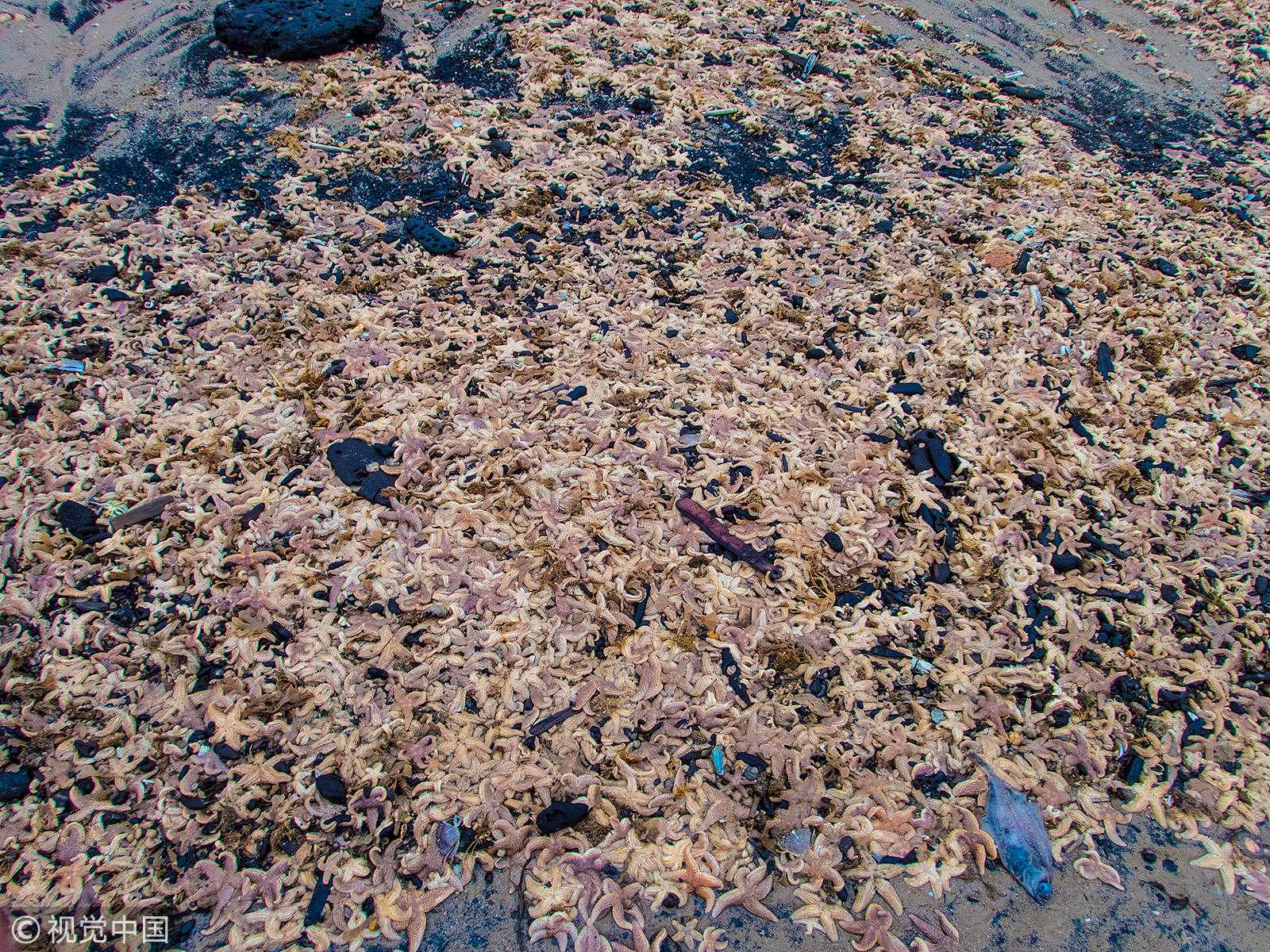
Nature
16:10, 29-Nov-2018
Thousands of starfish found washed ashore on UK beach
Updated
16:06, 02-Dec-2018
CGTN

After days of stormy seas, tens of thousands of starfish were found washed up on a beach in Mablethorpe, Lincolnshire, a county in the East Midlands of England. They are believed to have been dumped on the beach after rough seas ripped them from the seabed in recent days.

A thick line of starfish stretched for hundreds of yards along the sand. /VCG Photo
A thick line of starfish stretched for hundreds of yards along the sand. /VCG Photo
“I would say there are at least 100,000 because of the length of the line of them. They are quite small. They may have been about four to five inches across at the most. Occasionally you get a few hundred washed up but never a massive amount like this. I've been here 26 years now and I've never seen it to that extent.” Trevor Bradford, a freelance photographer told The Independent.

Starfish washed up on the beach at Mablethorpe, Lincs. /VCG Photo
Starfish washed up on the beach at Mablethorpe, Lincs. /VCG Photo
Earlier this year, thousands of starfish and other marine life such as sea urchins and fish blanketed the beach in Ramsgate on England's south coast. It was one of the biggest mass strandings on record in the country.

Hundreds of thousands of starfish and other sea life were washed ashore in Ramsgate, Kent. /VCG Photo
Hundreds of thousands of starfish and other sea life were washed ashore in Ramsgate, Kent. /VCG Photo
It is believed that storms or high winds are the most likely explanation for the phenomenon. Since starfish live on the sandy and soft sediment areas, when water currents get violent, they are easily picked up by waves and washed to the shore. And by the time they've been found, most of the starfish are already died.

Starfish (Linckia laevigata) /VCG Photo
Starfish (Linckia laevigata) /VCG Photo
In spite of mass strandings, the population of starfish hasn't decreased much. They reproduce quickly, their spawn includes hundreds of millions of individuals. Besides, starfish are found in all the oceans of the world with more than 1,500 species currently recognized.

Tangled sea fish /VCG Photo
Tangled sea fish /VCG Photo
Currently, most starfish species are not threatened, but it doesn't mean that they are not facing any danger. Wasting Disease, which is killing most starfish, is brutal. The disease starts with lesions, followed by body fragmentation and death. The purple ochre starfish in Oregon, United States were heading towards localized extinction because of the disease. Unfortunately, the disease is still not fully understood.
Besides, warmer temperatures and ocean pollution also pose a threat to starfish's habitat.

SITEMAP
Copyright © 2018 CGTN. Beijing ICP prepared NO.16065310-3
Copyright © 2018 CGTN. Beijing ICP prepared NO.16065310-3